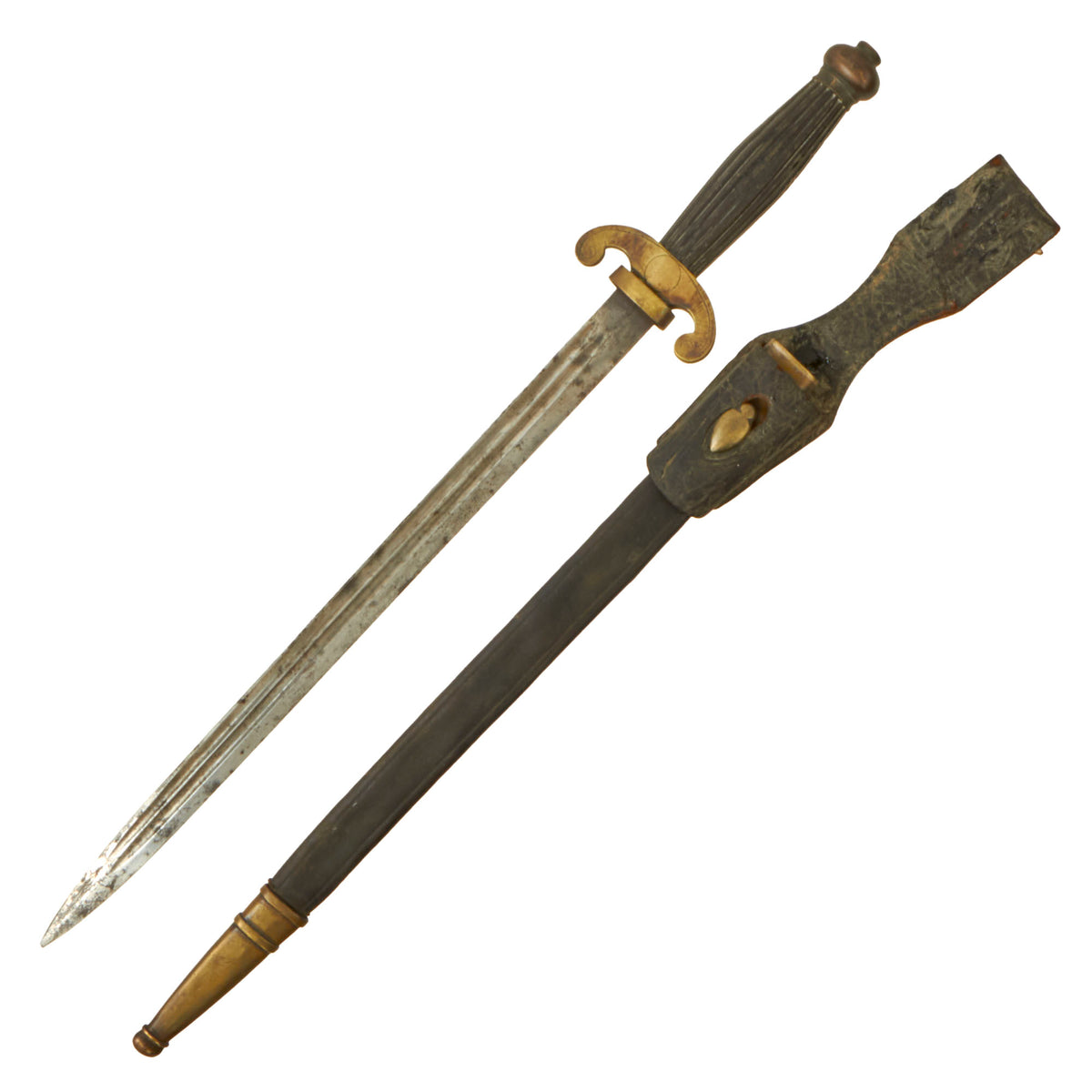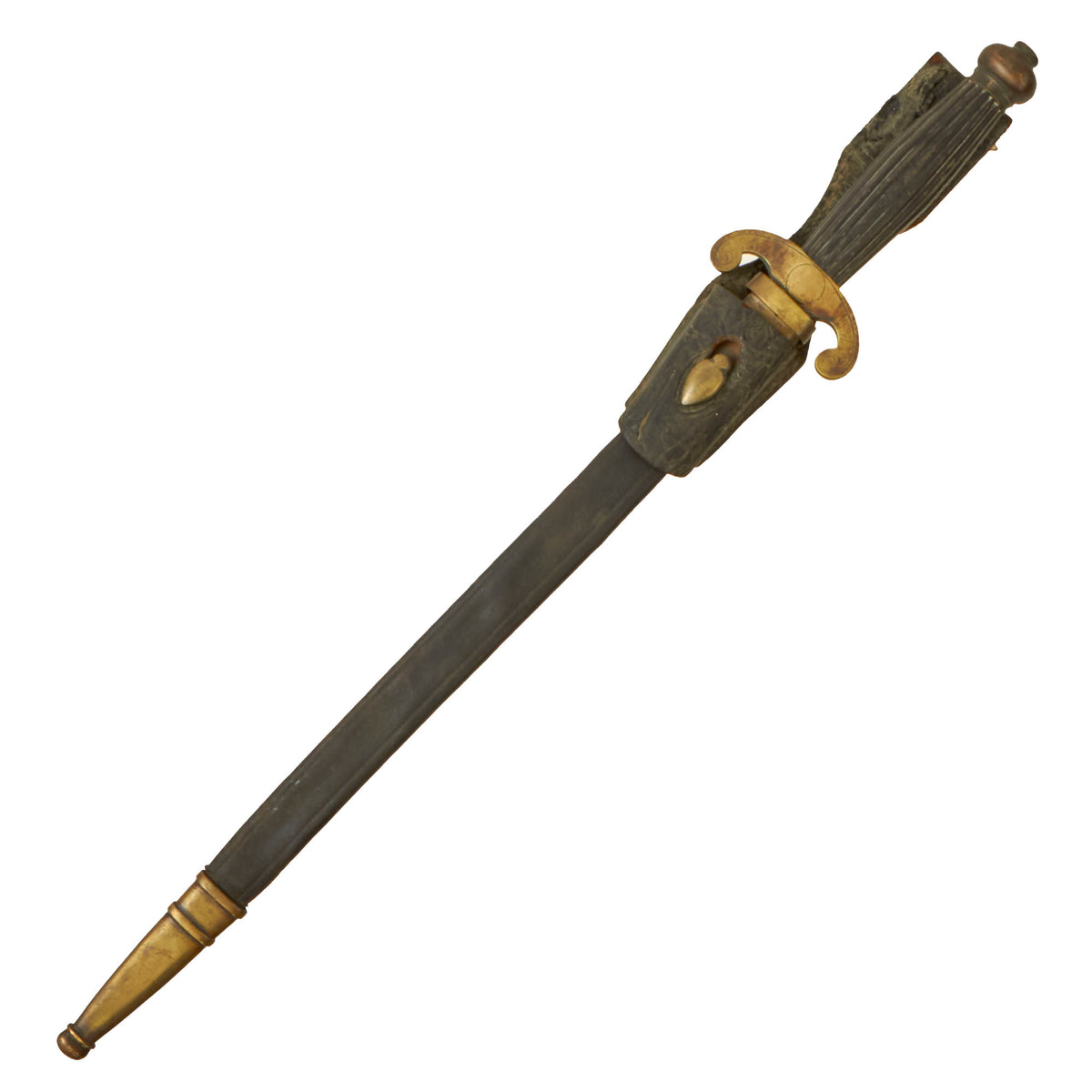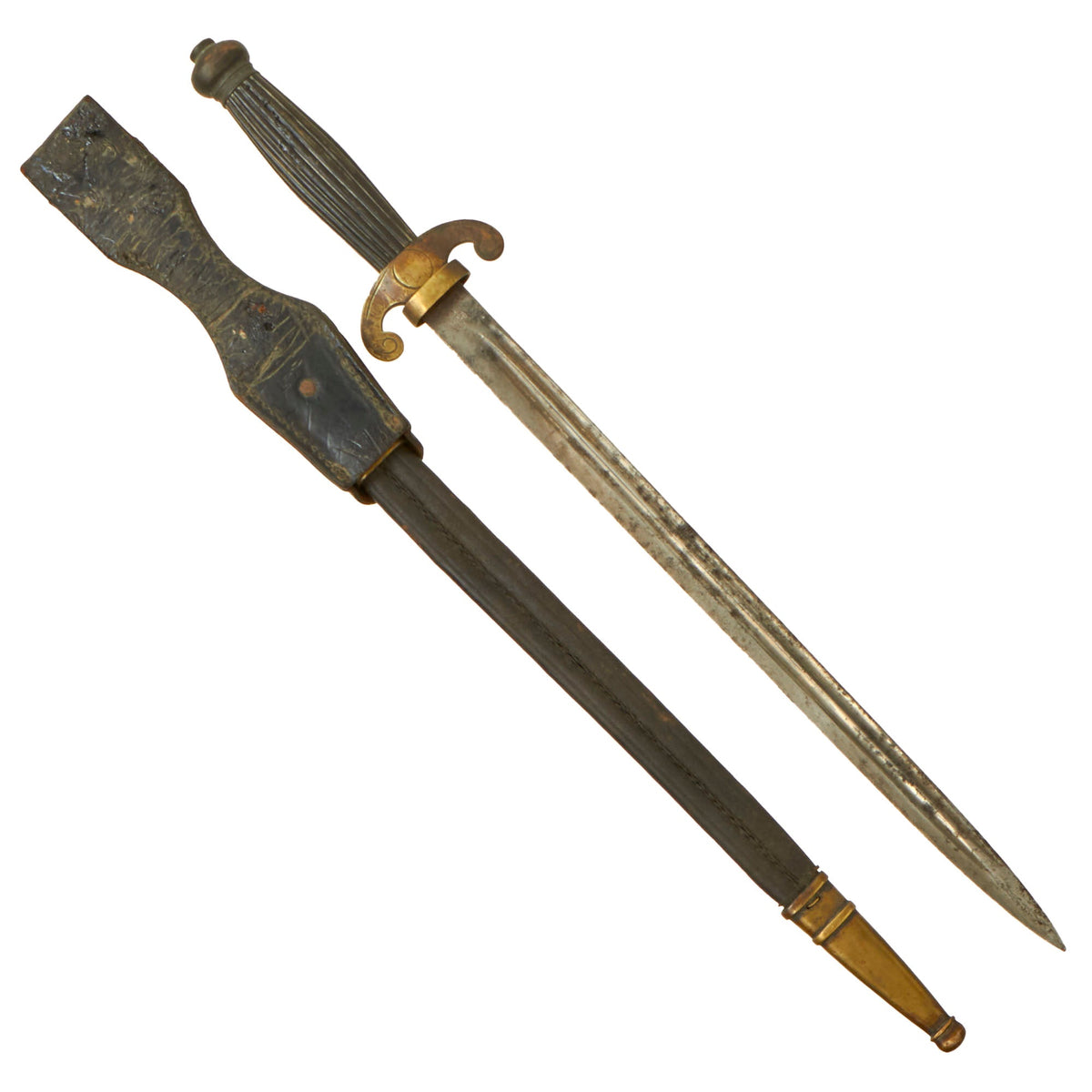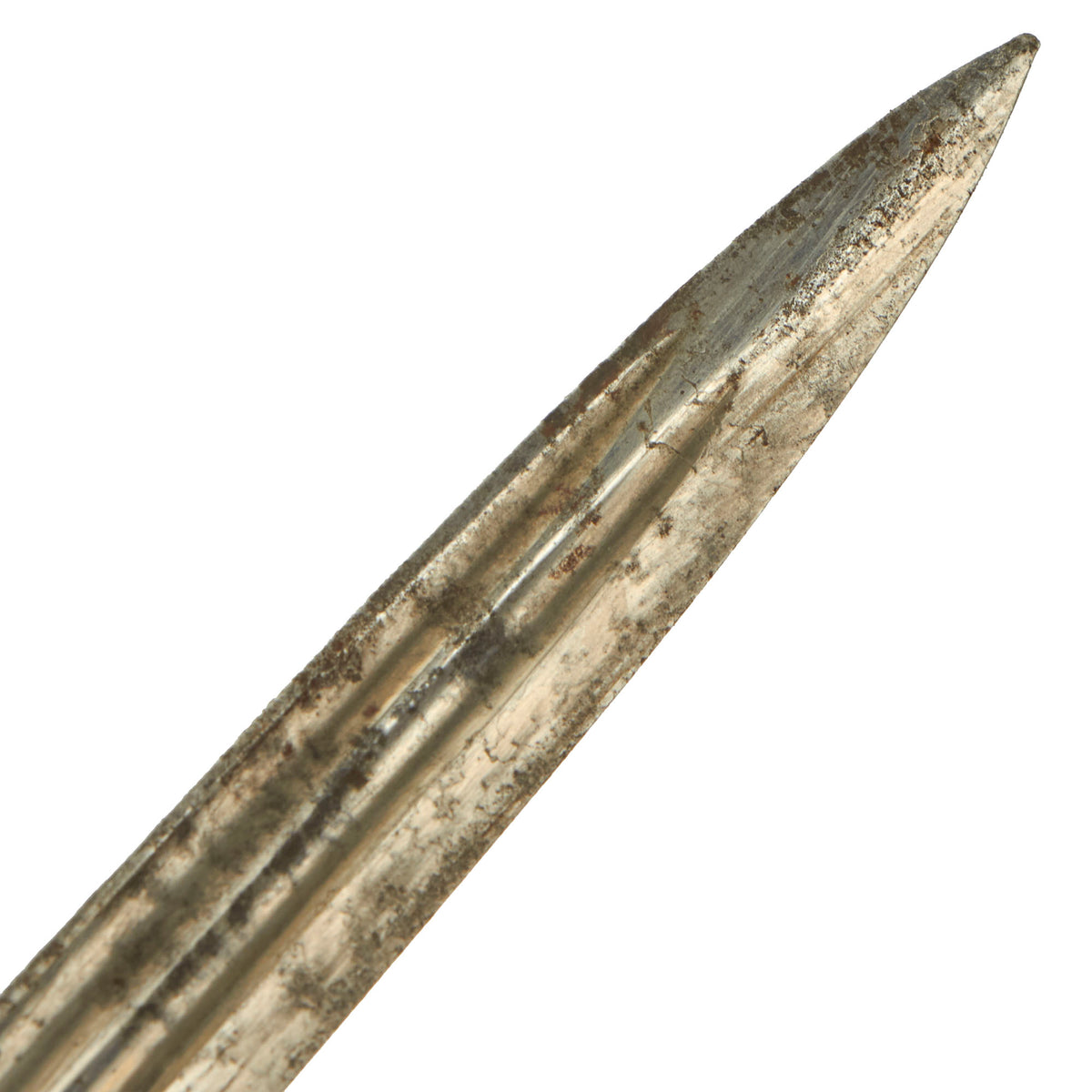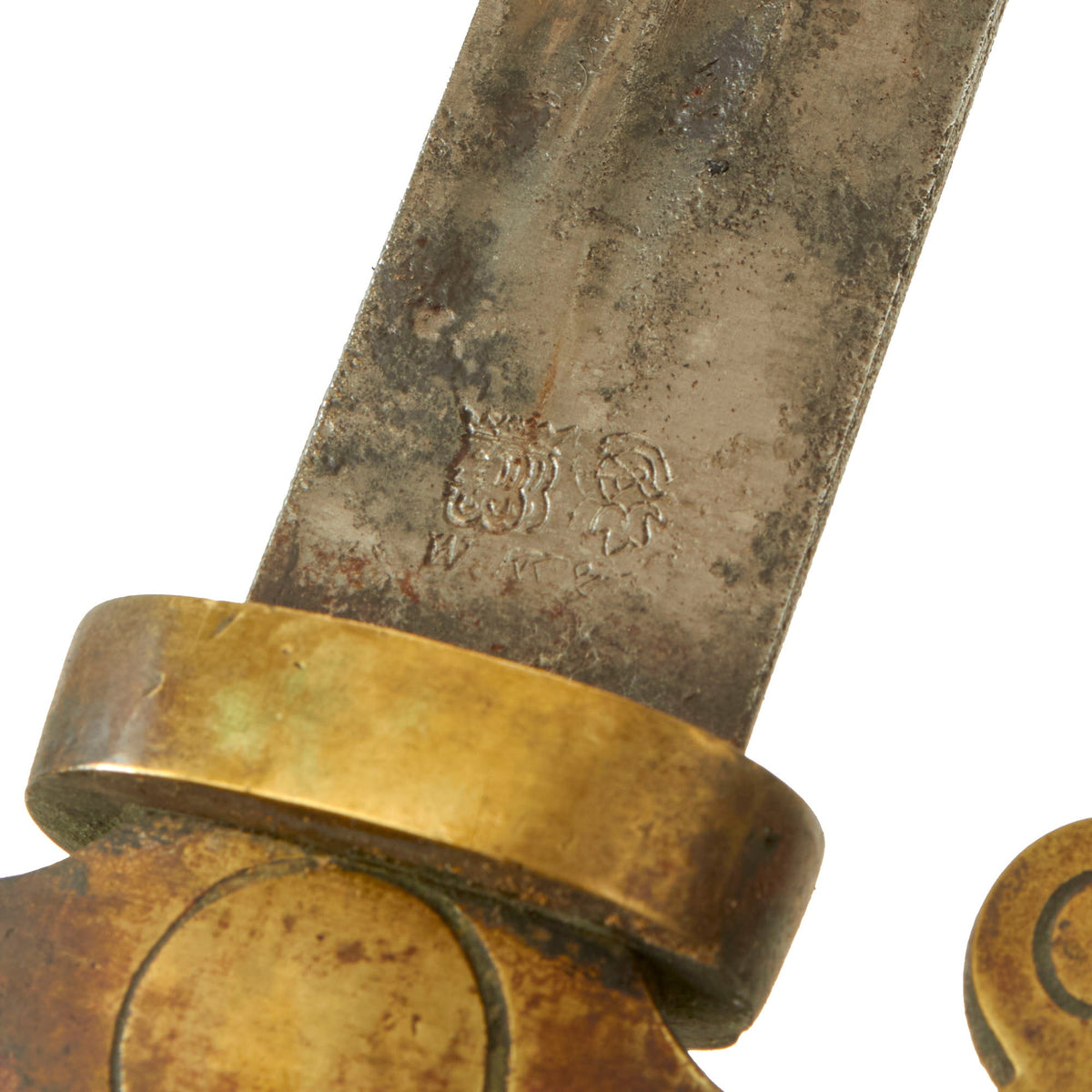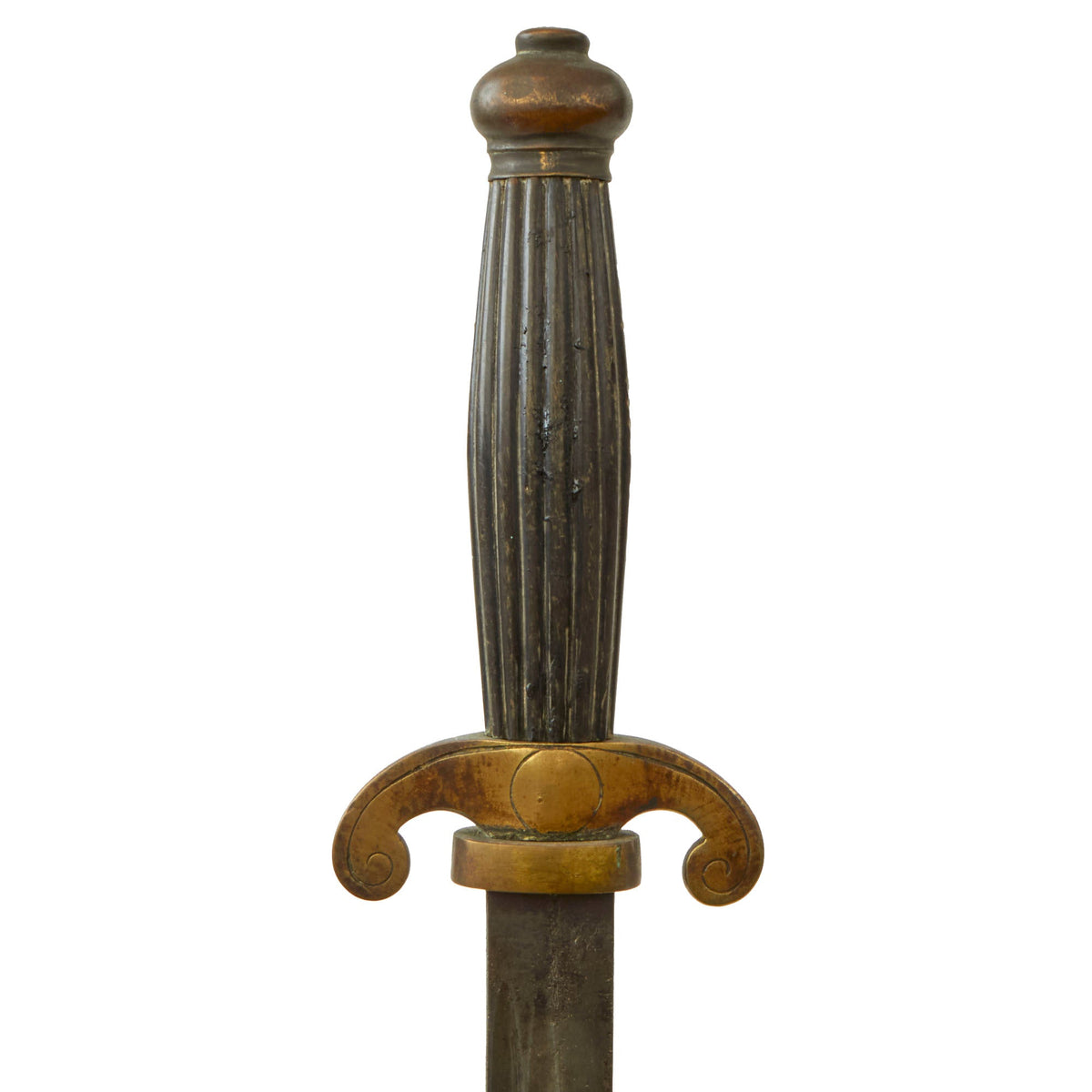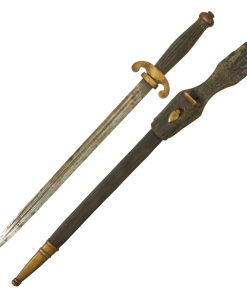Original French Boxer Rebellion M1860 Naval Dagger with German Blade by WKC with Scabbard & Frog – Brought Back by American Soldier – China Relief Expedition Original Items
$ 595,00 $ 178,50
Original Item. One-of-a-Kind. This is a very interesting dagger which came to us with the story of being a bringback by an American soldier during the Boxer Rebellion. Upon inspection we found it to be a French M1860 Naval Administration Dagger, with a German-made blade by Weyersberg Kirschbaum & Cie. From the blade we can tell this is of the Boxer Rebellion era, as WKC did not form until 1883. So this dagger was either taken by a Boxer off of a French body and retaken by an American soldier, or given by a French soldier to an American who brought it back.
This may have been issued to a Fusiliers Marins, which was a specialized French naval infantry unit that defended the French Legation in Peking during the Boxer Rebellion. The Fusiliers Marins are trained to fight in coastal and land regions, and also protect French Navy sites and naval vessels.
The blade has a double fuller on both sides. The blade is marked on the ricasso with the double trademark “King’s Helmet” (Ritter-helm) alongside a “Kings’s Head” (königskopf) over W.K. & C. logo of legendary German maker Weyersberg Kirschbaum & Cie of Solingen. This company is a famous manufacturer of military swords and cutlery in Solingen, Germany – a city famous since the middle ages for its metal-working and craftsmanship in sword making.
The blade is in fair shape overall with some pitting and the tip is a bit dull, but overall its in great shape. The hilt of the sword is in good shape with the horn handle retaining most of its finish and the crossguard having a great patina. The crossguard is a small bit loose but overall it’s a very tight sword.
The scabbard and frog are in similar condition with a great patina. The frog is the first we have ever seen on these and is cracking heavily as shown with some evidence of glue on some spots.
This dagger is of the correct era for being issued for the Boxer Rebellion, however we cannot confirm this 100%. It is still an extremely scarce dagger on its own and the first we have ever seen with a German-made blade. This sword has an unbelievable amount of history with it, and it comes ready for further research and display.
Specifications:
Blade Length: 14 1/2″
Blade Style: Dagger with double fuller
Overall length: 20 1/4”
Crossguard: 2 3/4”
Scabbard Length: 16” with frog
The Boxer Rebellion
The Boxer Rebellion, also known as the Boxer Uprising or Boxer Insurrection, was an anti-foreign, anti-imperialist, and anti-Christian uprising in North China between 1899 and 1901, towards the end of the Qing dynasty, by the Society of Righteous and Harmonious Fists, known as the “Boxers” in English due to many of its members having practised Chinese martial arts, which at the time were referred to as “Chinese boxing”. It was defeated by the Eight-Nation Alliance of foreign powers.
Following the First Sino-Japanese War, villagers in North China feared the expansion of foreign spheres of influence and resented the extension of privileges to Christian missionaries, who used them to shield their followers. In 1898, North China experienced several natural disasters, including the Yellow River flooding and droughts, which Boxers blamed on foreign and Christian influence. Beginning in 1899, the movement spread across Shandong and the North China Plain, destroying foreign property such as railroads, and attacking or murdering Christian missionaries and Chinese Christians. The events came to a head in June 1900, when Boxer fighters, convinced they were invulnerable to foreign weapons, converged on Beijing with the slogan “Support the Qing government and exterminate the foreigners.”
Diplomats, missionaries, soldiers, and some Chinese Christians took refuge in the Legation Quarter, which the Boxers besieged. The Eight-Nation Alliance—comprising American, Austro-Hungarian, British, French, German, Italian, Japanese, and Russian troops—moved into China to lift the siege and on 17 June stormed the Dagu Fort at Tianjin. Empress Dowager Cixi, who had initially been hesitant, supported the Boxers and on 21 June issued an imperial decree that was a de facto declaration of war on the invading powers. Chinese officialdom was split between those supporting the Boxers and those favouring conciliation, led by Prince Qing. The supreme commander of the Chinese forces, the Manchu general Ronglu, later claimed he acted to protect the foreigners. Officials in the southern provinces ignored the imperial order to fight against foreigners.
The Eight-Nation Alliance, after initially being turned back by the Imperial Chinese military and Boxer militia, brought 20,000 armed troops to China. They defeated the Imperial Army in Tianjin and arrived in Beijing on 14 August, relieving the 55-day Siege of the International Legations. Plunder and looting of the capital and the surrounding countryside ensued, along with summary execution of those suspected of being Boxers in retribution. The Boxer Protocol of 7 September 1901 provided for the execution of government officials who had supported the Boxers, for foreign troops to be stationed in Beijing, and for 450 million taels of silver—more than the government’s annual tax revenue—to be paid as indemnity over the course of the next 39 years to the eight invading nations. The Qing dynasty’s handling of the Boxer Rebellion further weakened their control over China, and led to the Late Qing reforms.
Fast Shipping with Professional Packaging
Thanks to our longstanding association with UPS FedEx DHL, and other major international carriers, we are able to provide a range of shipping options. Our warehouse staff is expertly trained and will wrap your products according to our exact and precise specifications. Prior to shipping, your goods will be thoroughly examined and securely secured. We ship to thousands clients each day across multiple countries. This shows how we're dedicated to be the largest retailer on the internet. Warehouses and distribution centres can be located throughout Europe as well as the USA.
Note: Orders with more than one item will be assigned a processing date depending on the item.
Before shipping before shipping, we'll conduct a thorough inspection of the items you have ordered. Today, the majority of orders will be delivered within 48 hours. The delivery time will be between 3-7 days.
Returns
The stock is dynamic and we cannot completely manage it because multiple stakeholders are involved, including our factory and warehouse. So the actual stock may alter at any time. It's possible that you may not receive your order once the order has been made.
Our policy is valid for a period of 30 days. If you don't receive the product within 30 days, we are not able to issue a refund or an exchange.
You can only return an item if it is unused and in the same state as the day you received it. You must have the item in its original packaging.
Related products
Uncategorized
Uncategorized
Uncategorized
Armored Burgonet Helmet & Polearm from Scottish Castle Leith Hall Circa 1700 Original Items
Uncategorized
Uncategorized
Uncategorized
Uncategorized
Uncategorized
Uncategorized
Armoured Fighting Vehicles of the World: AFVs of World War One (Hardcover Book) New Made Items
Uncategorized
Uncategorized
Uncategorized
Uncategorized
Angolan Rebel 1970s era 60mm Inert Display Mortar from Angolan Civil War Original Items
Uncategorized
Uncategorized
Uncategorized
Australian WWII Owen MK1 Machine Carbine SMG Custom Fabricated Replica with Sling Original Items
Uncategorized
Uncategorized
Uncategorized
Uncategorized
Uncategorized
